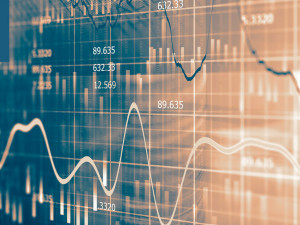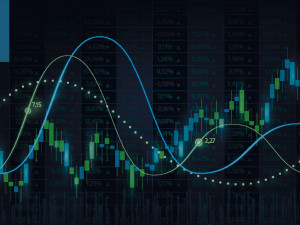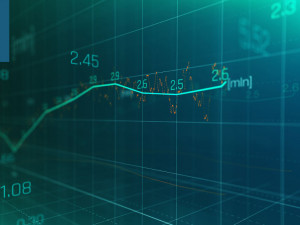
Wage/Price spiral about to begin?
Morning mid-market rates – The majors
1st June: Highlights
- Fears over inflated wage demands begin
- Fed’s inflation measure above 3%
- ECB Meeting to have additional significance
Haldane ultra-bullish on UK economy
However, he has also raised the spectre of a long-forgotten bogey man of the bad old days of wage inflation.
Given the rate at which the economy is recovering and the continued pent-up demand that is still to be satisfied, Haldane is concerned that trades Unions will begin to believe they can anticipate higher inflation by pre-empting a fall in workers real wages by demanding increases well above the current rate of inflation.
This would create a wage/price cycle not seen since the seventies.
There is already something of a skills shortage developing as the economy reopens and such militancy could see the UK’s recovery derailed.
Hints of a tightening of monetary policy are keeping the pound supported against a continually weak dollar but fundamental reasons to buy the pound are gradually dissipating.
First, the advantage that the UK received from being the first to start mass vaccination has gradually been denuded. This was only to be expected and has led investors to become less bullish rather than outright bearish for the UK.
The interconnection between the major global economies means that there is a continuous knock-on effect from economic policy. The U.S., Eurozone and UK continue to support their economies but in different manners. Having distilled all the available data, the market believes that since inflation is going to arrive in all three, it is the one which raises rates fastest and farthest that will see the most traction for their currency.
Last week, the pound continued to make progress versus the dollar, reaching a high of 1.4219. It moved higher in the thinner trading with yesterday’s bank holiday, to the high at 1.4242 as traders await this week’s data.
Considering your next transfer? Log in to compare live quotes today.
A further $6 trillion in stimulus announced
He believes that the strength of the economy should ensure that those who are able should contribute to continued economic growth, while those who are less fortunate should be supported.
This Democratic stance is a total 180-degree reversal of the policies of the previous Administration who wanted to support industry and commerce almost to the detriment of the working man.
President Biden is in the midst of formulating a strategy to return corporate taxation to its former level prior to its significant cut by President Trump and is at the forefront of arranging a global system of corporate taxation to deal with a more globalized economy.
The market has come to something of a standstill as it awaits the release of the latest employment report this Friday.
It is hard to remember traders more conflicted than they are at the moment. The past two employment reports have brought unwelcome shocks, although the market believes that employment will begin to improve steadily, and the Fed has an answer to rising inflation.
The Fed has a preferred measure of inflation to what economists look at. While the market looks at CPI, Jerome Powell much prefers PCE, or Personal Consumption Expenditures. That data was released on Friday and showed a rise to 3.1%.
This is clearly well above the Fed’s 2% target for CPI, but it is impossible to correlate the two pieces of data. With the NFP report due and Memorial Day Holiday today, the market is likely to remain subdued for most of the week. Estimates for the NFP remain quite bullish with traders wary of an upside surprise.
Last week, the dollar index continued to show little sign of improving. It rose to a high of 90.44 but we dropped below the 90 level again yesterday to end the day at 89.80.
Longer term fears growing
In a speech last week, Weidmann commented that the ECB must tighten monetary policy to curb inflation, no matter the effect on heavily indebted nations.
This is a very clear indication of the position that the Bundesbank supports and is possibly the shape of things to come.
Any increase in official interest rates is likely to cause more chaos to the Eurozone than a period of higher than target inflation.
This is of no consequence to Weidmann who carries the flag for Germany’s almost paranoid aversion to inflation.
Given the one nation, one vote methods adopted by the region, Germany could easily be outvoted. If there is a prolonged period of inflation that appears to be either out of control or in danger of becoming so, the new German Chancellor will face a very difficult decision.
Wiedemann, stung by being looked over for the ECB President in favour of Christine Lagarde, will be in no mood to promote a less Conservative attitude and will anticipate support from the Government to ensure that the ECB follows Bundesbank strictures as was promised over 20 years ago.
Weidmann went on to criticise the continuation of Quantitative Easing, which was supposed to be a temporary solution, but here we are ten years later, and it is an accepted part of the Central Banker’s toolkit.
With growth expected to rise exponentially before falling back to rend and inflation set to remain above trend for some time, the fear of stagflation could again arise,
While this is the economist’s bogeyman, no one really knows the condition that could encourage its arrival.
Last week, the euro simply tracked the dollar. It traded between 1.2265 and 1.2132 last week and we moved higher yesterday to close at 1.2230.

About Alan Hill
Alan has been involved in the FX market for more than 25 years and brings a wealth of experience to his content. His knowledge has been gained while trading through some of the most volatile periods of recent history. His commentary relies on an understanding of past events and how they will affect future market performance.”



